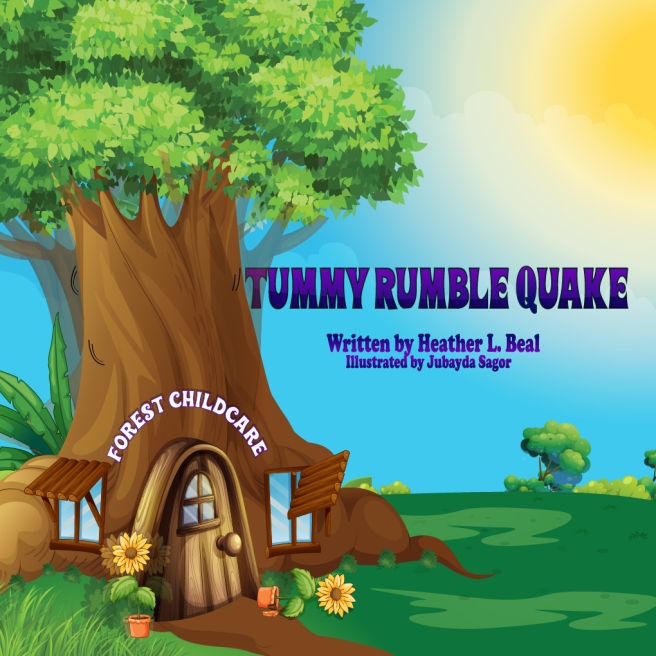
 Guest Blogger Heather Beal is a military veteran with 23 years of crisis management and operational planning experience that she draws upon daily in her battle to raise two well-prepared, happy, curious, and intelligent children. As a trained emergency manager and parent, she saw the need to provide age-appropriate disaster preparedness information to young children in a way that empowered rather than frightened them. She is currently writing additional books to cover a greater spectrum of potential disasters children may face.
Guest Blogger Heather Beal is a military veteran with 23 years of crisis management and operational planning experience that she draws upon daily in her battle to raise two well-prepared, happy, curious, and intelligent children. As a trained emergency manager and parent, she saw the need to provide age-appropriate disaster preparedness information to young children in a way that empowered rather than frightened them. She is currently writing additional books to cover a greater spectrum of potential disasters children may face.
“Generally speaking, we do not prepare our children for disaster. We make them hold our hand in the parking lot and talk about the dangers of getting burned by the stove, but we stop short of this really big “disaster” word. When I think about it, I can come up with a few excuses we call reasons as to why we don’t give this topic the attention that we should.
First, like our children, (but usually without donning the superhero capes and masks), we believe that we are invincible. It (the disaster) can’t happen to ‘us,’ it only happens to ‘others.’ Folks – look at Hurricane Harvey, Superstorm Sandy, Hurricane Katrina, the Indian Ocean Tsunami, and any other number of disasters. With that many people affected – the ‘us’ and the ‘others’ are the same people. We need to look at disaster as a probability, not a possibility.
Second, we think talking about disaster will be too scary. I get it. No one wants to tell children anything bad could happen. We all know our children could get terribly hurt running if hit by a car in the parking lot, but we don’t get into explicit details about injury and death. We do however, talk to them about being safe, making good choices, and not doing things that could more likely result in their getting hurt.
We should approach talking about disaster in the same way we approach other learning topics or the consequences of actions or inaction. We don’t need to focus on the destruction a tornado can cause, how their lives could be uprooted, or what other things could dramatically change. We can however, talk about what children need to do to stay as safe as possible.
There are no guarantees in life for anything. We can’t guarantee that a car in the parking lot won’t do something stupid, just as we can’t guarantee the tornado will miss a child’s house, school, or childcare. But we, as parents, as childcare providers, as educators, as caregivers, as emergency managers, and as community members, can arm our children with the tools to succeed. We owe them that.
Sounds good – but how would I know, right? Fair question. A few years ago I tried to explain to my then 4-year old daughter that she and her brother might be woken up in the middle of the night to go into the basement if there was a tornado warning. Of course, it was already dark and stormy (thunder and lightning and everything). Needless to say, I did a very poor job, ultimately scaring her and beating myself up about my failed attempt to mitigate later fear through a botched explanation. Never again I vowed.
That was when I discovered that almost no one was having the conversation with young kids (toddler, preschool, or kindergarten) about disaster. At the same time, I realized that disaster was not going to sit by patiently and wait until my children could calmly and rationally discuss everything at a grown up level. I decided I could develop a way to talk with them in a way that didn’t scare them, but instead empowered them by teaching them what to do and giving them back a little control in a typically uncontrollable situation. They might not be able to stop the disaster, but they could do something to increase their safety within it.
I started Train 4 Safety Press to develop picture books that would teach children what to do “if.” As I conducted research, I discovered a few books out there on the science of disaster, but almost none that taught young children what to do when the disaster was happening. Our first book Elephant Wind tackles what to do during a tornado. Tummy Rumble Quake teaches children about the Great ShakeOut™ and earthquake safety.
Children have a great capacity for building their own resilience. Teaching them how to protect themselves can have an exponential effect. Children could not only help themselves, they could help their classmates, their teachers, their family and their community. Isn’t anything that increases the odds we bring our children home after a disaster worth it? Can we afford not to talk about it?”
And here is a great resource: National Child Traumatic Stress Network

Reblogged this on Child Life Mommy and commented:
While coping with the tragedy caused from Hurricane Harvey, this resource couldn’t have come at a better time.
LikeLike
Thank you. Children are counting on us, we have to make preparation and education priorities, for their sake.
LikeLiked by 1 person